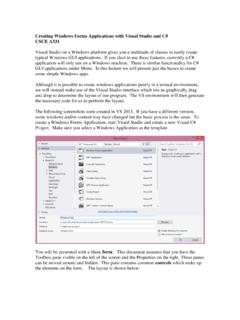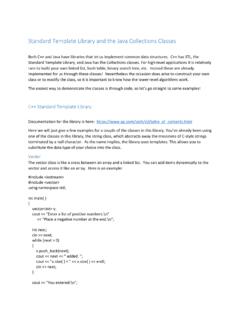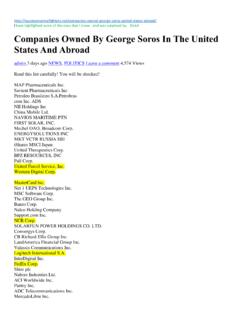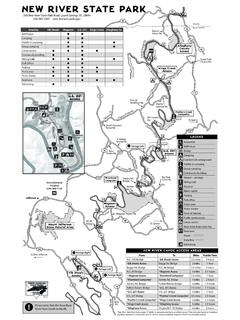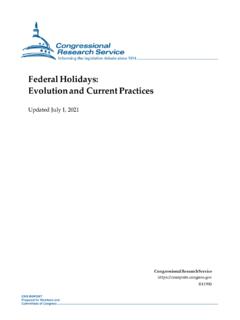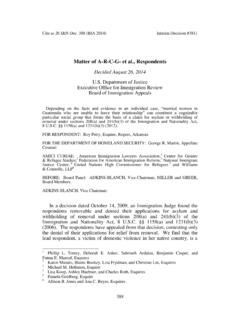Transcription of IEEE Recommended Practice For Software Requirements Speci ...
1 The Institute of Electrical and Electronics Engineers, East 47th Street, New York, NY 10017-2394, USAC opyright 1998 by the Institute of Electrical and Electronics Engineers, rights reserved. Published 1998. Printed in the United States of 0-7381-0332-2 No part of this publication may be reproduced in any form, in an electronic retrieval system or otherwise, without the prior written permission of the publisher. IEEE Std 830-1998 (Revision ofIEEE Std 830-1993) IEEE Recommended Practice for Software Requirements Specifications Sponsor Software Engineering Standards Committeeof theIEEE Computer Society Approved 25 June 1998 IEEE-SA Standards Board Abstract: The content and qualities of a good Software Requirements specification (SRS) are de-scribed and several sample SRS outlines are presented. This Recommended Practice is aimed atspecifying Requirements of Software to be developed but also can be applied to assist in the selec-tion of in-house and commercial Software products.
2 Guidelines for compliance with are also provided. Keywords: contract, customer, prototyping, Software Requirements specification, supplier, systemrequirements specifications IEEE Standards documents are developed within the IEEE Societies and the Standards Coordinat-ing Committees of the IEEE Standards Association (IEEE-SA) Standards Board. Members of thecommittees serve voluntarily and without compensation. They are not necessarily members of theInstitute. The standards developed within IEEE represent a consensus of the broad expertise on thesubject within the Institute as well as those activities outside of IEEE that have expressed an inter-est in participating in the development of the of an IEEE Standard is wholly voluntary. The existence of an IEEE Standard does not implythat there are no other ways to produce, test, measure, purchase, market, or provide other goods andservices related to the scope of the IEEE Standard.
3 Furthermore, the viewpoint expressed at thetime a standard is approved and issued is subject to change brought about through developments inthe state of the art and comments received from users of the standard. Every IEEE Standard is sub-jected to review at least every five years for revision or reaffirmation. When a document is morethan five years old and has not been reaffirmed, it is reasonable to conclude that its contents,although still of some value, do not wholly reflect the present state of the art. Users are cautioned tocheck to determine that they have the latest edition of any IEEE for revision of IEEE Standards are welcome from any interested party, regardless ofmembership affiliation with IEEE. Suggestions for changes in documents should be in the form of aproposed change of text, together with appropriate supporting : Occasionally questions may arise regarding the meaning of portions of standards asthey relate to specific applications.
4 When the need for interpretations is brought to the attention ofIEEE, the Institute will initiate action to prepare appropriate responses. Since IEEE Standards rep-resent a consensus of all concerned interests, it is important to ensure that any interpretation hasalso received the concurrence of a balance of interests. For this reason, IEEE and the members of itssocieties and Standards Coordinating Committees are not able to provide an instant response tointerpretation requests except in those cases where the matter has previously received formalconsideration. Comments on standards and requests for interpretations should be addressed to:Secretary, IEEE-SA Standards Board445 Hoes Box 1331 Piscataway, NJ 08855-1331 USAA uthorization to photocopy portions of any individual standard for internal or personal use isgranted by the Institute of Electrical and Electronics Engineers, Inc.
5 , provided that the appropriatefee is paid to Copyright Clearance Center. To arrange for payment of licensing fee, please contactCopyright Clearance Center, Customer Service, 222 Rosewood Drive, Danvers, MA 01923 USA;(978) 750-8400. Permission to photocopy portions of any individual standard for educational class-room use can also be obtained through the Copyright Clearance : Attention is called to the possibility that implementation of this standard mayrequire use of subject matter covered by patent rights. By publication of this standard,no position is taken with respect to the existence or validity of any patent rights inconnection therewith. The IEEE shall not be responsible for identifying patents forwhich a license may be required by an IEEE standard or for conducting inquiries intothe legal validity or scope of those patents that are brought to its attention.
6 Copyright 1998 IEEE. All rights reserved. iii Introduction (This introduction is not a part of IEEE Std 830-1998, IEEE Recommended Practice for Software Requirements Specifi-cations.) This Recommended Practice describes Recommended approaches for the specification of Software require-ments. It is based on a model in which the result of the Software Requirements specification process is anunambiguous and complete specification document. It should helpa) Software customers to accurately describe what they wish to obtain;b) Software suppliers to understand exactly what the customer wants;c)Individuals to accomplish the following goals:1)Develop a standard Software Requirements specification (SRS) outline for their own organiza-tions;2)Define the format and content of their specific Software Requirements specifications;3)Develop additional local supporting items such as an SRS quality checklist, or an SRS writer the customers, suppliers, and other individuals, a good SRS should provide several specific benefits, suchas the following: Establish the basis for agreement between the customers and the suppliers on what the softwareproduct is to do.
7 The complete description of the functions to be performed by the Software specifiedin the SRS will assist the potential users to determine if the Software specified meets their needs orhow the Software must be modified to meet their needs. Reduce the development effort. The preparation of the SRS forces the various concerned groups inthe customer s organization to consider rigorously all of the Requirements before design begins andreduces later redesign, recoding, and retesting. Careful review of the Requirements in the SRS canreveal omissions, misunderstandings, and inconsistencies early in the development cycle when theseproblems are easier to correct. Provide a basis for estimating costs and schedules. The description of the product to be developed asgiven in the SRS is a realistic basis for estimating project costs and can be used to obtain approval forbids or price estimates.
8 Provide a baseline for validation and verification. Organizations can develop their validation andverification plans much more productively from a good SRS. As a part of the development contract,the SRS provides a baseline against which compliance can be measured. Facilitate transfer. The SRS makes it easier to transfer the Software product to new users or newmachines. Customers thus find it easier to transfer the Software to other parts of their organization,and suppliers find it easier to transfer it to new customers. Serve as a basis for enhancement. Because the SRS discusses the product but not the project thatdeveloped it, the SRS serves as a basis for later enhancement of the finished product. The SRS mayneed to be altered, but it does provide a foundation for continued production readers of this document are referred to Annex B for guidelines for using this Recommended Practice tomeet the Requirements of IEEE/EIA , IEEE/EIA Guide Industry Implementation of ISO/IEC12207: 1995, Standard for Information Technology Software life cycle processes Life cycle data.
9 Iv Copyright 1998 IEEE. All rights reserved. Participants This Recommended Practice was prepared by the Life Cycle Data Harmonization Working Group of the Soft-ware Engineering Standards Committee of the IEEE Computer Society. At the time this Recommended prac-tice was approved, the working group consisted of the following members: Leonard L. Tripp, Chair The following persons were on the balloting committee:Edward ByrnePaul R. CrollPerry DeWeeseRobin FralickMarilyn Ginsberg-FinnerJohn HarauzMark HenleyDennis LawrenceDavid MaiborRay MilovanovicJames MooreTimothy NiesenDennis RillingTerry RoutRichard SchmidtNorman F. SchneidewindDavid SchultzBasil SherlundPeter VoldnerRonald WadeSyed AliTheodore K. AtchinsonMikhail AugustonRobert E. BarryLeo BeltracchiH. Ronald BerlackRichard E. BiehlMichael A. BlackledgeSandro BolognaJuris BorzovsKathleen L.
10 BriggsM. Scott BuckMichael CaldwellJames E. CardowEnrico A. CarraraLawrence CatchpoleKeith ChanAntonio M. CicuTheo ClarkeSylvain ClermontRosemary ColemanVirgil Lee CooperW. W. Geoff CozensPaul R. CrollGregory T. DaichGeoffrey DarntonTaz DaughtreyBostjan K. DergancPerry R. DeWeeseJames DoEvelyn S. DowCarl Einar DragstedtSherman EaglesChristof EbertLeo EganRichard E. FairleyJohn W. FendrichJay ForsterKirby FortenberryEva FreundRichard C. FriesRoger U. FujiiAdel N. GhannamMarilyn Ginsberg-FinnerJohn Garth GlynnJulio Gonzalez-SanzL. M. GuntherDavid A. GustafsonJon D. HagarJohn HarauzRobert T. HarleyHerbert HechtWilliam HefleyManfred HeinMark HeinrichMark HenleyDebra HerrmannJohn W. HorchJerry HullerPeter L. HungGeorge JackelenFrank V. JorgensenWilliam S. JunkGeorge X. KambicRichard KarcichRon S. KenettJudith S. KernerRobert J.

